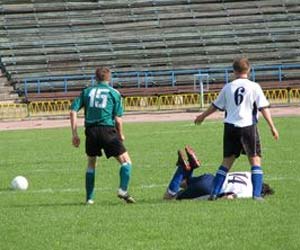
‘The Q-Collar has been designed to press gently on the jugular vein to slow blood outflow, increasing the brain's blood volume during competitive play. This effect can, in turn, reduce the impact of football heading.’
Read More..Tweet it Now
The neck collar device, called a Q-Collar, is designed to press gently on the jugular vein to slow blood outflow, increasing the brain's blood volume during competitive play. The resulting effect is blood filling the brain vessel (like an airbag) to help the brain fit tighter within the skull cavity, reducing the energy absorbed by the brain during collisions.Read More..
The study, published online in the British Journal of Sports Medicine, focused on cumulative sub-concussive impacts to the head that change the white matter structure of the brain. In soccer, that can come from a head ball to a collision with another player to a hard fall.
"White matter is essentially structural pathways that connect all the information/signal processing centers of the brain that support normal function," said Dr. Myer.
Dr. Myer and his colleagues studied 46 female high school soccer players. Twenty-four of them wore a Q-Collar. All 46 athletes underwent neuroimaging at up to three points in time over a six month period. This included the 3-month soccer season and 3-month post-season rest period, with no exposure to head impacts. Head impacts were tracked using accelerometers--a computer chip--placed behind the left ear during practice and games.
Neuroimaging analysis revealed significant white-matter changes from pre- to post-season in those who didn't wear the collar. No significant changes were found in those who did wear the collar, despite a similar number and magnitude of head impacts.
Advertisement
"Certainly, we know the benefits of playing soccer in female athletes far outweigh the risks that we are seeing and that's an important message we have to take away from this study," said Dr. Myer.
Advertisement
"This could be a paradigm shift in how we study the brain and protect the brain internally from head impact exposure," said Dr. Myer. "We need to continue to do larger studies with various populations, and as we move forward with more research, we will know more on how effective this approach can be to protect the brain."
Source-Eurekalert









